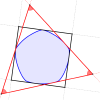Student interactions with e-assessment > Student views and outcomes
Question 17
What are students' views on e-assessment, and what are their expectations from automated feedback?
 Igor' Kontorovich
Igor' Kontorovich Peter Rowlett
Peter Rowlett Sam Fearn
Sam Fearn Chris Sangwin
Chris Sangwin Paola Iannone
Paola Iannone Ian Jones
Ian Jones Ben Davies
Ben Davies Ann OShea
Ann OShea Niclas Larson
Niclas Larson George Kinnear
George Kinnear Karen Henderson
Karen Henderson Indunil Sikurajapathi
Indunil Sikurajapathi
This question does not specifically refer to automated assessments, so the answer is likely to depend on whether we talk about automated assessment or electronic hand-in of traditional assessment. What do students think they need to do to succeed with automated assessments? How does this compare to ‘other’ assessments which may they also be being asked to complete (traditional written assessments for example)?
What motivates this question?
-
Rønning finds evidence to suggest that students feel that the answer to an e-assessment problem is the most important part of the exercise, does this negatively affect their view on e-assessment and if so in what ways can we address these concerns?
-
Studies have been carried out on the attitudes of mathematics undergraduates to assessment (for example Iannone & Simpson, 2015 and 2017). It has been found that these undergraduates value traditional assessments. It would be useful to study the attitudes of mathematics students to various types and features of online assessments.
What might an answer look like?
One possibility might be to use surveys and interviews to study the attitudes of students from a range of universities to a range of assessments.
The framework presented by Van der Kleij and Lipnevich (2020, Fig. 3) could also inform the selection of methods, particularly as they highlight methodological concerns with survey-based research.
Related questions
- The question of students’ views relates closely to their approaches to using e-assessment, as considered in Q13: How do students interact with an e-assessment system?
- Students’ response to feedback is also considered in:
- Q15: How do students engage with automated feedback? What differences (if any) can be identified with how they would respond to feedback from a teacher?
- Q8: How useful for students’ long-term learning is feedback that gives a series of follow-up questions, from a decision tree, versus a single terminal piece of feedback?
- Comparisons with paper-based assessments are considered in:
References
Iannone, P., & Simpson, A. (2015). Students’ preferences in undergraduate mathematics assessment. Studies in Higher Education, 40(6), 1046–1067. https://doi.org/10.1080/03075079.2013.858683
Iannone, P., & Simpson, A. (2017). University students’ perceptions of summative assessment: The role of context. Journal of Further and Higher Education, 41(6), 785-801. https://doi.org/10.1080/0309877X.2016.1177172
Rønning, F. (2017). Influence of computer-aided assessment on ways of working with mathematics. Teaching Mathematics and its Applications, 36(2), 94-107. https://doi.org/10.1093/teamat/hrx001
Sikurajapathi, I. Henderson, K., & Gwynllyw R. (2021). Students’ Perceptions of Enhanced e-Assessment Feedback Addressing Common Student Errors in Mathematics. MSOR Connections, 19(2), 10-27. https://doi.org/10.21100/msor.v19i2.1236
Van der Kleij, F. M., & Lipnevich, A. A. (2020). Student perceptions of assessment feedback: a critical scoping review and call for research. Educational Assessment, Evaluation and Accountability, 33(2), 345–373. https://doi.org/10.1007/s11092-020-09331-x